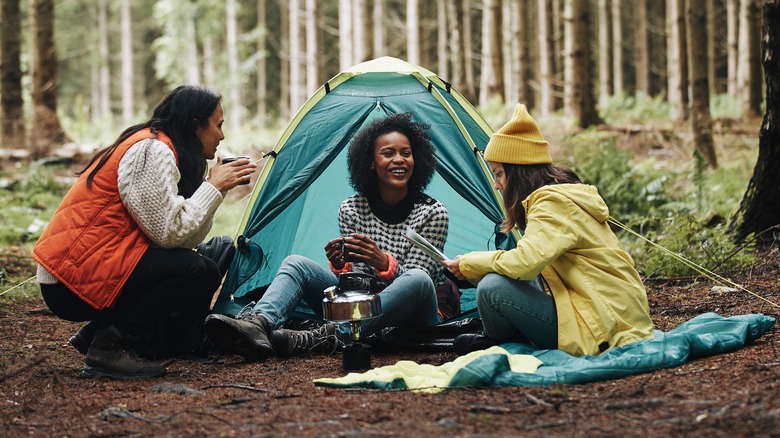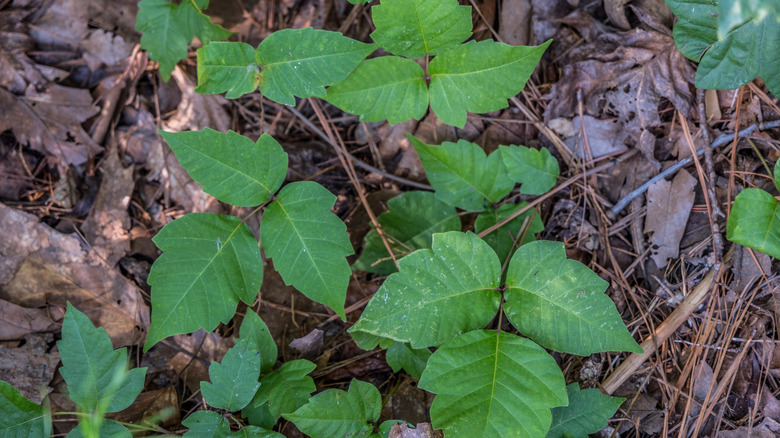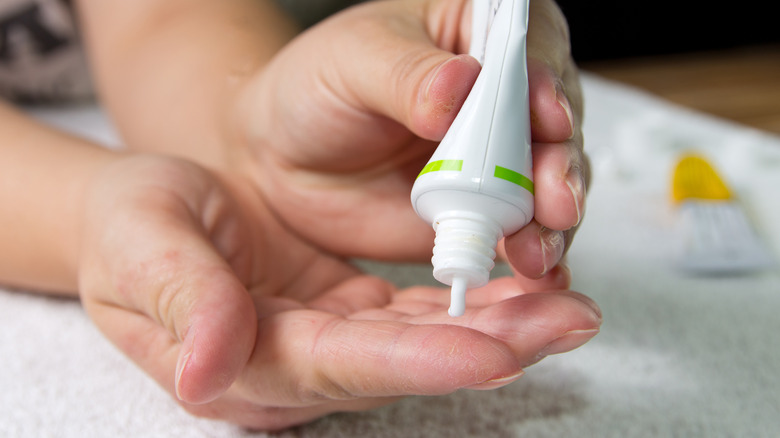What To Do If You Encounter Poison Ivy On Your Hike
For many adventurers, getting out and hitting the hiking trails is something to look forward to, and it comes with incredible health benefits. According to the health experts at the National Library of Medicine, hiking is an aerobic activity that has been shown through studies to reduce the risk of heart disease. It's also been pointed to as a significant mood booster and provides overall muscle strength for the body.
Lacing up your boots and getting ready for a hiking adventure is worth your while if you're excited to admire the scenery and spend time wildlife-watching. However, it's an activity that comes with its own set of risks. Among them is the chance you might encounter poison ivy along the way.
Poison ivy grows on vines along hiking trails or as a low shrub depending on the area you're exploring. If your skin inadvertently comes in contact with the plant while hiking, blisters, itching, and swollen red patches will likely follow. These symptoms are never pleasant, but if you do happen to end up with the dreaded rash, there are steps you can take that will help.
Steps to take immediately after a hike
Making contact with poison ivy is easy to do while hiking. The plant looks different during different seasons making it even harder to identify or notice while you're out exploring. Symptoms pointing to the fact that you've encountered poison ivy can show up differently as well.
Poison ivy possesses urushiol, which is an oil that provokes the immune system to react as if it's being attacked. This results in a rash known as poison ivy dermatitis. Just as you scan your skin to avoid ticks, it's important to examine yourself thoroughly after hiking for potential red patches or areas of itching. These can appear anywhere from four hours to four days after exposure.
Once you notice the rash, you can expect it to take at least a week to clear up. Unfortunately, hikers who don't see a rash pop up right away after encountering poison ivy run the risk of passing urushiol from their skin to areas like their eyes or mouth accidentally. This can make the symptoms last longer and become more painful.
To avoid worsening symptoms linked to poison ivy contact, it's a good idea to always shower with warm water and soap after every hike. This simple and preventative measure will remove any topical urushiol from your skin before you mistakenly spread it to your face. While showering alone might not stop a poison ivy rash entirely, it will certainly reduce symptoms and potential spread early on.
Follow-up care to reduce symptoms
Once you have a poison ivy rash, there isn't much you can do to expedite its disappearance. However, there are steps you can take to reduce symptoms like itching along the way. While scratching doesn't spread the rash, it can lead to infected blisters which is something you'll want to avoid. Consider applying hydrocortisone cream which is a topical steroid that can be purchased over-the-counter. It's a good option for keeping itchiness at bay and worth investing in before your hike so you have it ready to go if poison ivy strikes.
If you prefer to go the route of home remedies to reduce poison ivy itch, there are viable options for that as well. Placing wet and cool compresses on the rash throughout the day for 15 to 30 minutes at a time can ease itching sensations significantly. Some hikers who encounter poison ivy find soaking in a cool-water bath topped with baking soda helpful in reducing symptoms.
Typically, a poison ivy rash will go away on its own with time. Worst-case scenario, a widespread rash with many blisters may need to be treated with oral antibiotics. In this case, a primary care physician would need to prescribe the medication after an examination.


